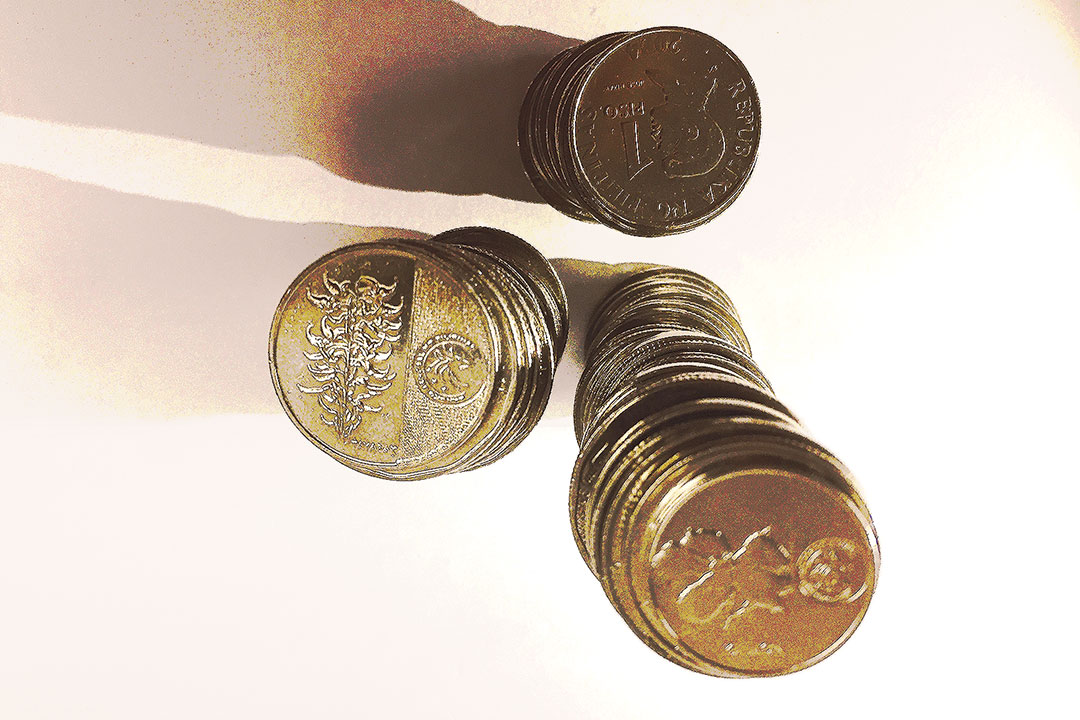Peso to move sideways ahead of central bank’s policy review

THE PESO is expected to trade sideways against the dollar this week ahead of the Monetary Board’s policy meeting on Thursday.
The local unit closed at P57.42 per dollar on Friday, weakening by four centavos from its P57.38 finish on Thursday, Bankers Association of the Philippines data showed.
Week on week, the peso also depreciated by 8.5 centavos from its P57.345 finish on May 3.
The peso moved sideways on Friday “on the back of weekend-related positioning,” Security Bank Corp. Chief Economist Robert Dan J. Roces said in a Viber message.
The dollar was also generally stronger on Friday following comments from US Federal Reserve officials, Rizal Commercial Banking Corp. Chief Economist Michael L. Ricafort said in a Viber message.
On Friday, the dollar pared initial declines and turned modestly higher as investors assessed a reading on US consumer sentiment and sifted through a flurry of comments from Fed officials, Reuters reported.
The University of Michigan’s preliminary reading of consumer sentiment came in at 67.4 for May, a six-month low and below the 76.0 estimate of economists polled by Reuters. In addition, the one-year inflation expectation climbed to 3.5% from 3.2%.
The dollar index, which measures the US currency against a basket of six peers, gained 0.07% to 105.29.
Debate over whether US interest rates are high enough deepened among Federal Reserve officials last week, and may be stoked further after a key survey showed a jump in consumers’ inflation expectations.
“There are… important upside risks to inflation that are on my mind, and I think there’s also uncertainties about how restrictive policy is and whether it’s sufficiently restrictive” to return inflation to the US central bank’s 2% target, Dallas Fed President Lorie Logan said at a Louisiana Bankers Association conference in New Orleans.
“I think it’s just too early to think about cutting rates… I think I need to see some of these uncertainties resolved about the path that we’re on, and we need to remain very flexible,” Ms. Logan said, though she did not directly address whether she feels the Fed may need to again raise its benchmark policy rate from the 5.25%-5.5% range that has been maintained since July.
Many US central bank officials, including Fed Chair Jerome H. Powell, have said they still think further rate hikes will prove unnecessary.
In an interview with Reuters, Atlanta Fed President Raphael Bostic said he still thought inflation was likely to slow under the current monetary policy and allow the central bank to begin reducing its policy rate in 2024 — though perhaps by only a quarter of a percentage point and not until the final months of the year.
Anchored expectations are considered by Fed officials as an important sign of the central bank’s credibility, and an aid in bringing inflation back to 2%.
San Francisco Fed President Mary Daly, in a taped interview on Thursday, said it is possible the “neutral” interest rate for the US had risen a bit, implying that any given level of the benchmark policy rate would lean less on economic activity than it would otherwise.
But she said the solution for the Fed in that case would be to keep its policy rate at the current level for longer.
Even if the neutral rate is higher “we still have restrictive policy, which is what we want,” Ms. Daly said. “But it might take more time to… bring inflation down.”
For this week, the peso’s movements against the dollar will largely depend on the Bangko Sentral ng Pilipinas’ (BSP) policy meeting on Thursday and the release of key US economic data, Mr. Roces said.
A BusinessWorld poll of 19 analysts conducted last week showed 17 analysts expect the Monetary Board to maintain its policy rate at 6.5% for a fifth straight review on Thursday.
On the other hand, one analyst said the BSP may cut the policy rate by 25 basis points (bps), while the other said that the central bank may raise rates amid persistent inflation.
The BSP raised borrowing costs by 450 bps from May 2022 to October 2023.
Mr. Powell’s scheduled speech on May 14 and the release of US producer and consumer inflation data and the latest jobless claims report this week will affect foreign exchange trading, Mr. Ricafort added.
Mr. Roces expects the peso to move between P57 and P57.40 per dollar this week, while Mr. Ricafort sees it ranging from P57.10 to P57.60. — A.M.C. Sy with Reuters



